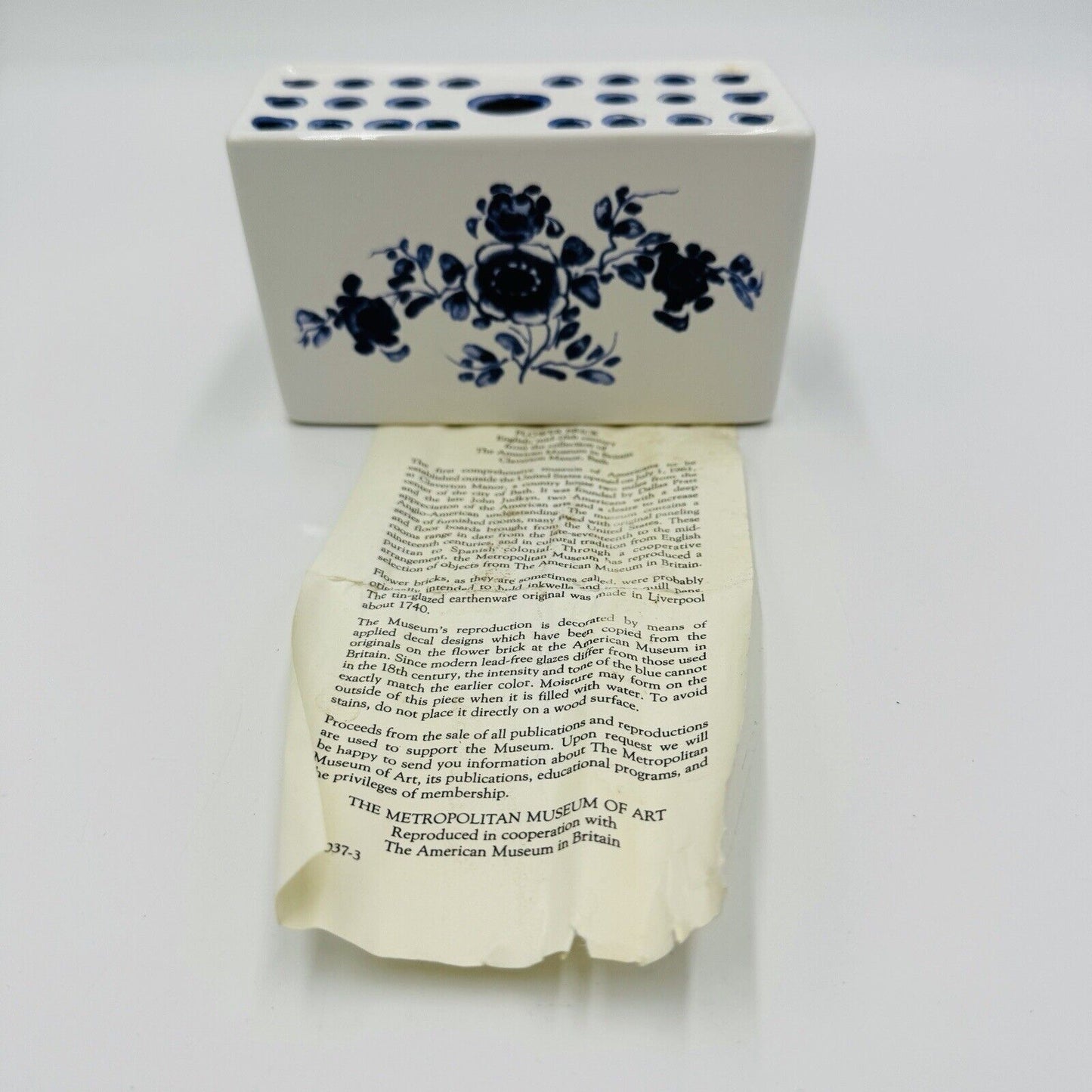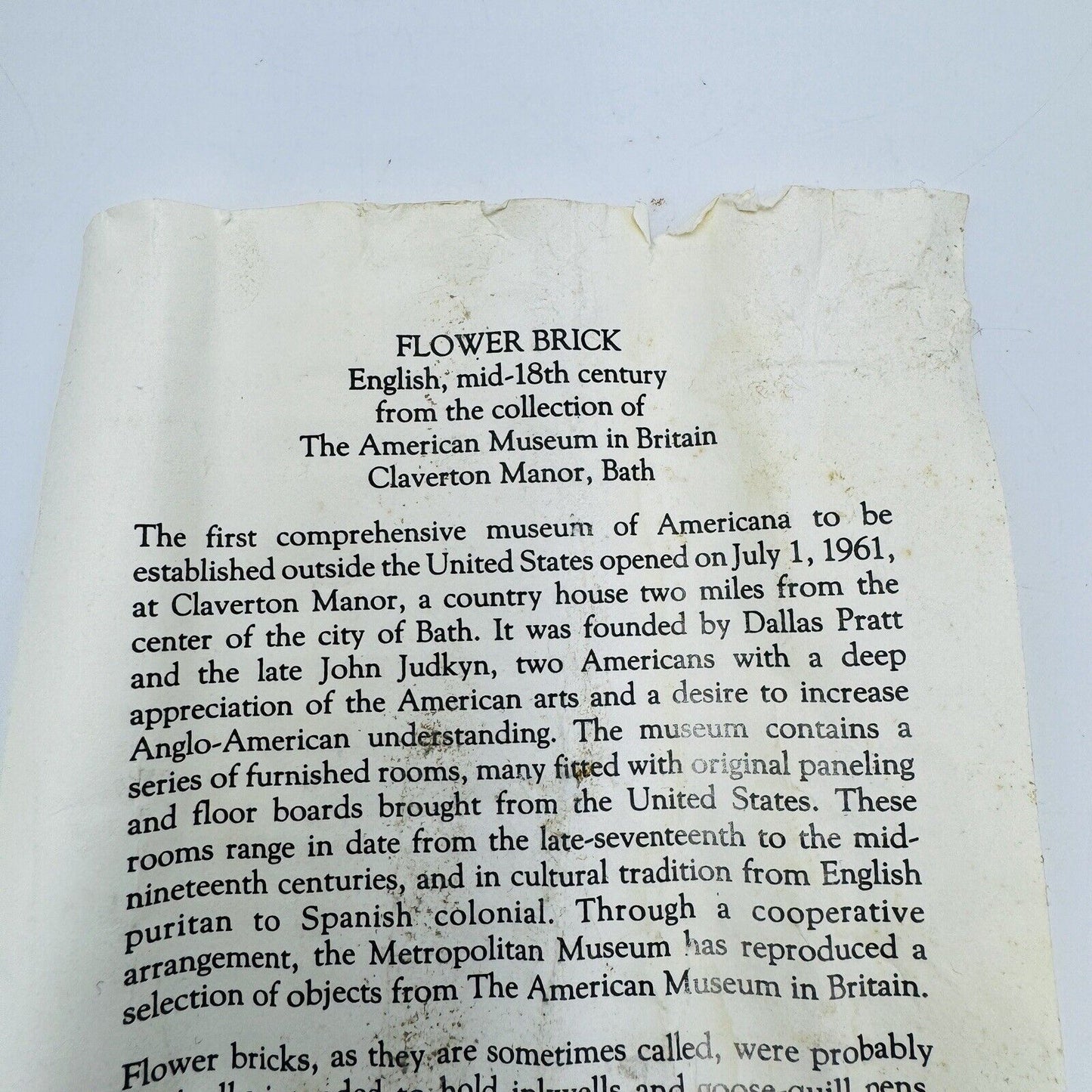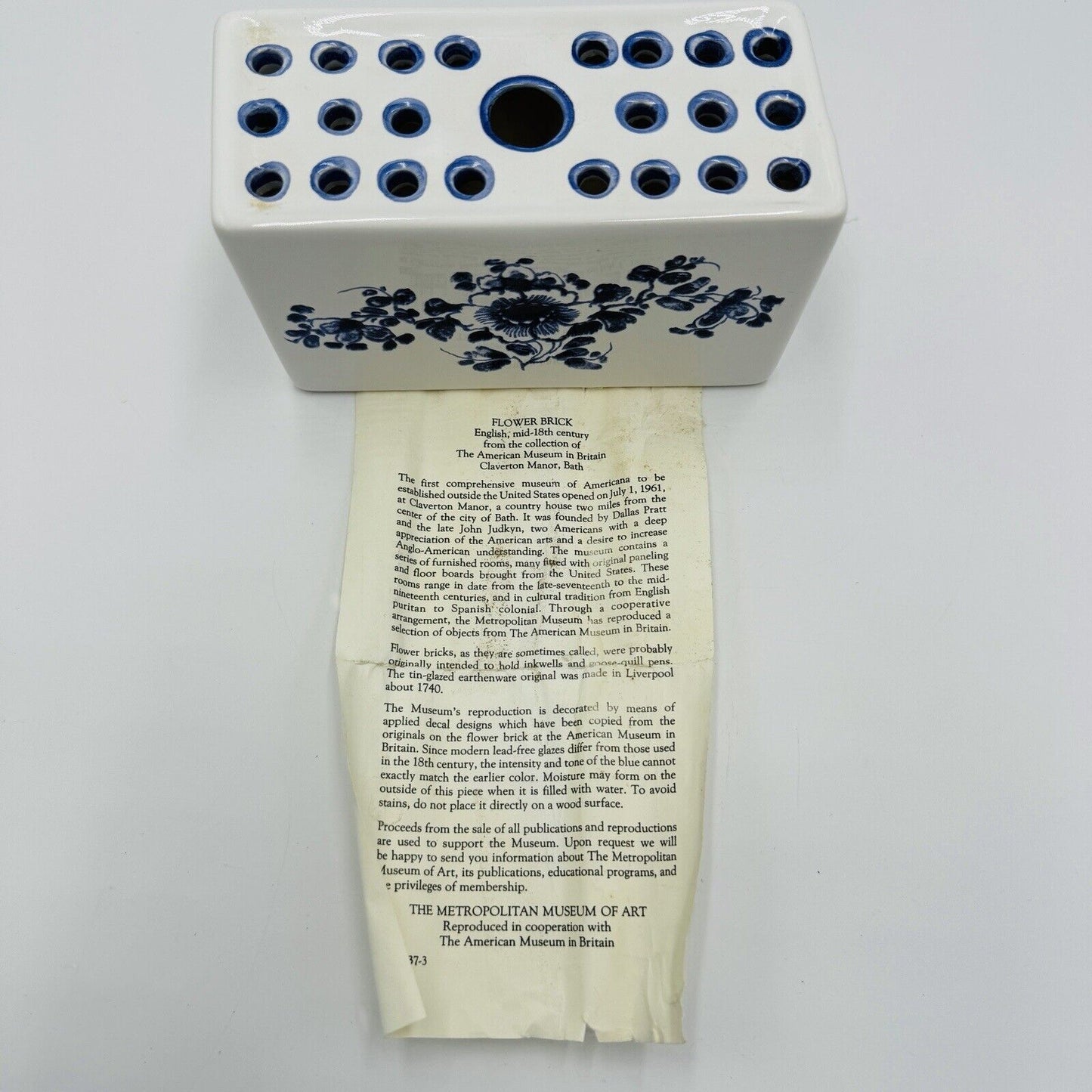Unbranded
Antique Flower Brick English, mid-18th century Porcelain Floral
Antique Flower Brick English, mid-18th century Porcelain Floral
Couldn't load pickup availability
This piece with comes with original paperwork. Pasted as follow:
FLOWER BRICK
English; mid-18th century from the collection of The American Museum in Britain Claverton Manor, Bath
The first comprehensive museum of Americana to be established outside the United States opened on July 1, 1961, at Claverton Manor, a country house two miles from the center of the city of Bath. It was founded by Dallas Pratt and the late John Judkyn, two Americans with a deep appreciation of the American arts and a desire to increase Anglo-American understanding. The museum contains a series of furnished rooms, many fited with original paneling and floor boards brought from the United States, These rooms range in date from the late-seventeenth to the mid-nineteenth centuries, and in cultural tradition from English puritan to Spanish colonial. Through a cooperative arrangement, the Metropolitan Museum has reproduced a selection of objects from The American Museum in Britain.
Flower bricks, as they are sometimes called, were probably originally intended to hold inkwells and goose-quill pens.
The tin-glazed earthenware original was made in Liverpool about 1740.
The Museum's reproduction is decorated by means of applied decal designs which have been copied from the originals on the flower brick at the American Museum in Britain. Since modern lead-free glazes differ from those used in the 18th century, the intensity and tone of the blue cannot exactly match the earlier color. Moisture may form on the outside of this piece when it is filled with water. To avoid stains, do not place it directly on a wood surface.
Proceeds from the sale of all publications and reproductions are used to support the Museum. Upon request we will be happy to send you information about The Metropolitan Museum of Art, its publications, educational programs, and the privileges of membership.
THE METROPOLITAN MUSEUM OF ART
Reproduced in cooperation with The American Museum in Britain
Share






























